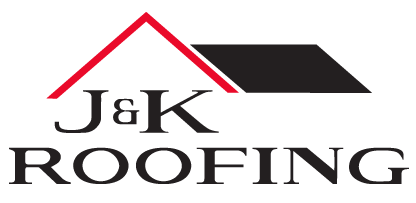
How To Prepare Your Commercial Roof For A Storm
It wasn’t too long ago that a terrible storm ripped through the greater Denver area and caused significant damage to many homes and businesses. In fact, in 2017 the entire Colorado Mills mall—with a roof the size of 21 football fields combined—was forced to close for commercial roofing repair due to a spring hailstorm.
Fortunately, there were no casualties or serious injuries as a result of the storm, but the point remains that storms can lead to costly damage, and they can be dangerous for the people inside.
Since weather predictions aren’t a perfect science, the best we can do is to enter storm season prepared for what may be ahead. Ensuring your roof is in good condition can be the best approach for storm damage prevention.
Here’s how to prepare your commercial roof for a storm.
1. Make Roof Inspections and Maintenance Planning Part of Your Standard Routine
You may not have enough advance notice of an upcoming storm to be able to schedule any commercial roof maintenance before it hits, but you can take preventative measures on a regular basis to make sure you’re prepared for bad weather.
Incorporate routine commercial roof inspections as part of your regular maintenance to have your roof inspected for any undetected leaks, cracks, sagging or weak spots. Have a roofing professional check for any possible problems around vents, skylights, eaves and joints.
You’ll want to make sure your roof isn’t showing signs of physical damage or problem areas where water or snow may accumulate. A best practice is to have your roof inspected twice a year and after every significant storm.
2. Have a Plan for Snow Removal
It can snow as late as May in Colorado, making it essential to prepare for snow storms, heavy wind, rain, and hail your springtime commercial roof preparation.
Specifically, you need a plan for snow removal. If heavy snow sits on a commercial roof for an extended period, leaks, ice dams, ice cycles and other problems can arise. This is especially important if you have a flat commercial roof.
3. Ensure Roof Flashing Is in Tact
As part of your inspection and preparation, take a look at your commercial roof flashing to make sure it’s not damaged and will do its job of directing water away from sensitive areas like joints, vents, and exhausts. Replace any damaged flashing upon discovery to protect your roof and your building’s exterior.
4. Regularly Unclog Gutters & Drains
Because rains and storms can direct debris to your roof drainage system, they need to be cleaned regularly to avoid clogs. Clogged gutters could lead to preventable leaks, mold and mildew and a bunch of other issues for your roof. Check and repair any cracks or loosened gutters or drains.
5. Inspect Rooftop Equipment
Many commercial roofs house HVAC systems, solar panels, pipes and plumbing systems, etc. Intense storms can put any of these at risk, and if they’re not properly secured to your roof, they could jostle around during a storm, creating cracks and leaks in your roofing surface. Check to make sure everything is properly strapped down or secured.
Faulty equipment on your roof can also cause a variety of issues to your commercial roof’s integrity. Leaky air conditioners, faulty wiring, unsealed vents are all the things you will want to avoid to protect your roof and keep people in your building safe.
Here’s more information on what kind of equipment is often stored on commercial roofs and how susceptible they are to storm damage.
Faulty equipment on your roof can cause a variety of issues to your commercial roof’s integrity. Leaky air conditioners,faulty wiring, unsealed vents are all the things you will want to avoid to protect your roof and keep people in your building safe.
6. Trim Trees & Remove Debris
An essential part of your commercial roof maintenance should be ensuring debris is removed as soon as it is spotted. This includes tree branches and anything else that may find its way on top of your roof.
The problem with tree branches and other rooftop debris is that they can pile up and prevent proper drainage. Even small pieces of debris can get lodged in your gutters and downspouts, which can lead to serious damage if you don’t take care of them.
7. Keep Your Commercial Roof Clean
Keeping your roof clean can help avoid a buildup of debris that can lead to clogs, algae or mold growth. Any of these issues can lessen the life of your roof. Having regular cleanings and making sure all equipment is clear of debris will protect your commercial investment for the long haul.
8. Schedule a Commercial Roof Inspection Before the Storm
The single best thing you can do to prepare for storm season is to have your commercial roof inspected. A professional commercial roof inspection and regular preventative maintenance can save you significant damage and prevent you from needing to replace your roof before it’s absolutely necessary.
Call a Professional Commercial Roofer
Call J&K Roofing at 303-425-7531 or click here to schedule your commercial roof inspection. Let us help you protect and extend the life of your commercial roof.
